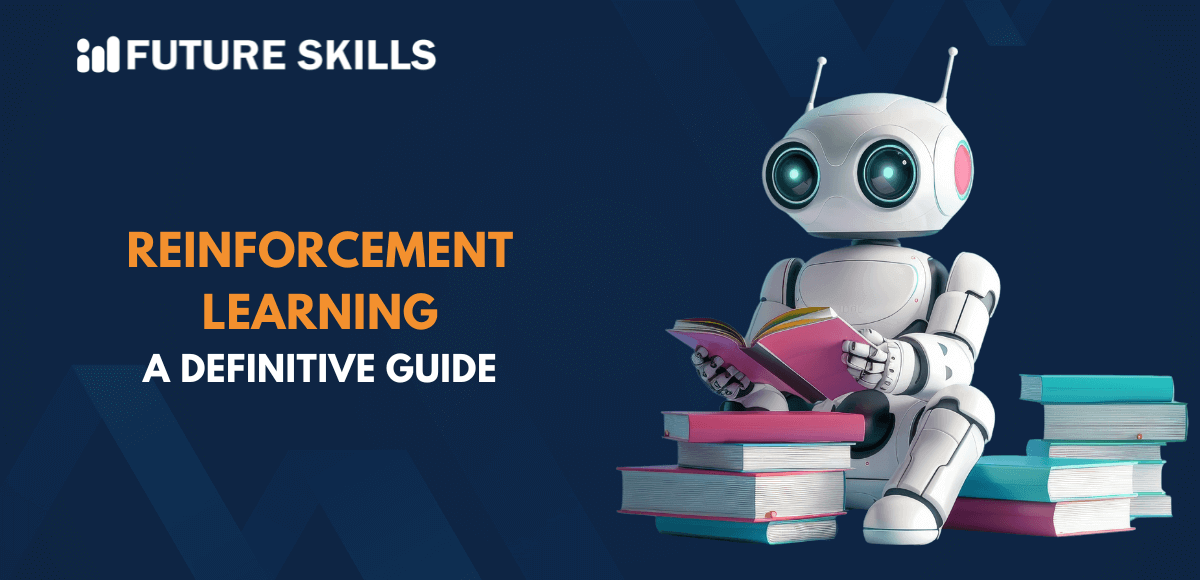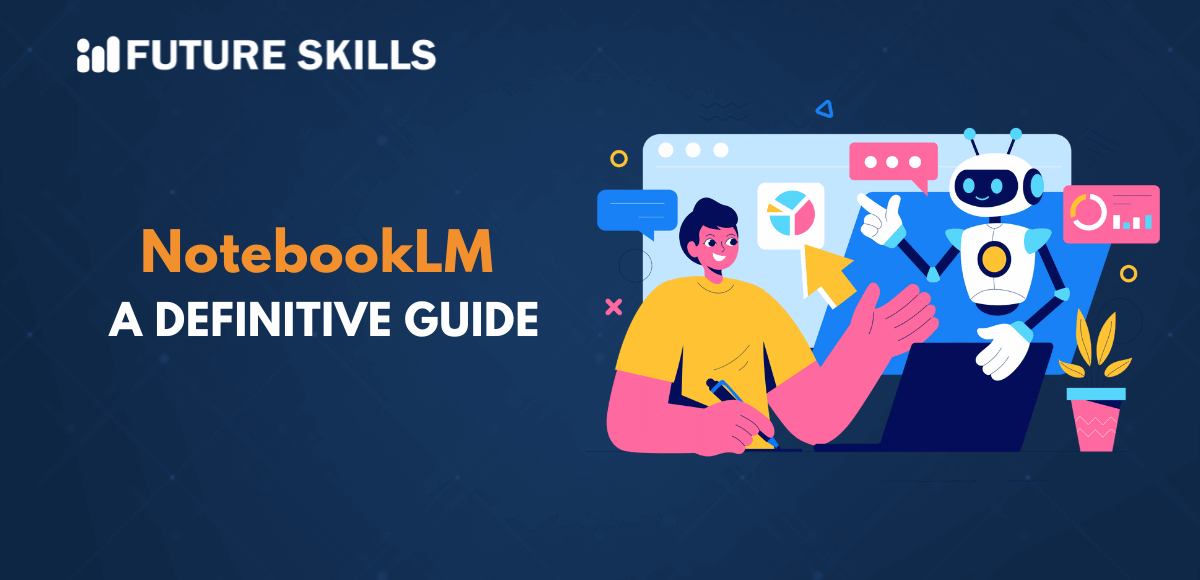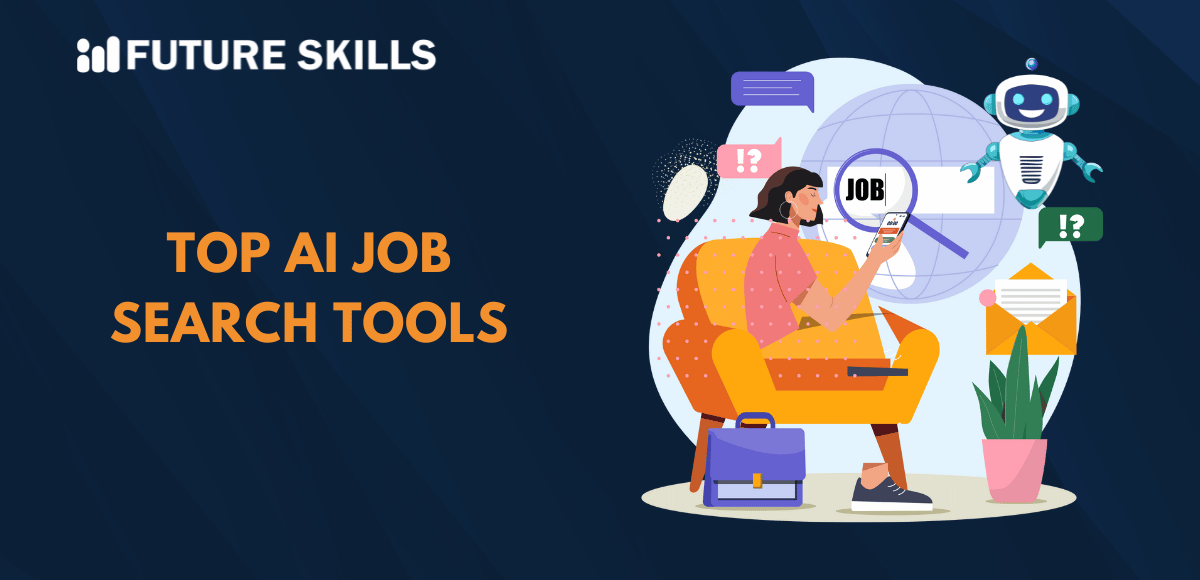Reinforcement learning models can bring the world closer to designing AI systems that would have super-intelligence and advanced cognitive abilities. You are reading this reinforcement learning tutorial to figure out how it can create AI systems that learn from their experiences. Let us assume the example of using reinforcement learning to help an agent complete an extremely difficult level in a game. Initially, the agent would have no idea about the game or its controls, obstacles at different levels, and objectives of the game. Reinforcement learning can help the agent learn all these things and complete the game on its own without additional intervention.
The magic of reinforcement learning revolves around the fact that agents can solve problems without using massive volumes of data, predefined solutions or explicit programming. You can find promising real-world applications of reinforcement learning in self-driving cars, new gameplay experiences, and robotics. The evolution of reinforcement learning research can open the doors for using it in personalized learning, resource management, and healthcare. Let us learn more about reinforcement learning, how it works, and its different applications with examples.
Become a specialist in prompt engineering and build a successful career with our Certified Prompt Engineering Expert (CPEE)™ Course. Enroll today!
Understanding the Definition of Reinforcement Learning
The first thing you need to learn about reinforcement learning is a clear explanation of its definition. You can understand the significance of reinforcement learning in machine learning from the fact that reinforcement learning is a machine learning process. The primary focus of reinforcement learning is on training software or systems to execute certain actions independently. The software or the systems, referred to as agents, have to learn the ideal approaches to make decisions through interactions with their environment.
You can notice that reinforcement learning involves autonomous agents that can not only make decisions but also implement different actions as responses to their environment. Self-driving cars and robots are some of the examples of autonomous agents you can find in the real world. Reinforcement learning involves an autonomous agent learning how to perform a specific task with the trial and error approach without any guidance from humans. It helps in resolving sequential decision-making issues in unpredictable or new environments alongside showcasing better promises for the growth of artificial intelligence.
Demystifying the Magic of Reinforcement Learning
The common assumption about reinforcement learning is that it is a useful resource for training machine learning systems with the trial and error approach. Reinforcement learning is a formidable component in machine learning as it helps the agents learn how to find their way through complexities in the concerned environment. For example, reinforcement learning can help industrial robots learn how to perform certain tasks.
One of the most striking highlights of reinforcement learning algorithms is the feedback system that offers rewards for desired behaviors and penalties for malicious actions. The feedback system guides the learning process of the agent as it interacts with the environment and modifies its behavior. The algorithm would assign positive value to favorable actions that would indicate that the agent should use them. On the other hand, undesired behaviors or actions get negative values thereby discouraging agents from using them.
The agents in reinforcement learning look for long-term rewards and the best performance to reach an optimal solution. It is important to note that the agent would not focus on the less important goals when they pay attention to long-term goals. The agents could learn the best ways to avoid negative behavior and actions in favor of the positive actions.
You might have some concerns about the process used to guide reinforcement learning systems. The Markov decision process defines the foundations for most of the reinforcement learning systems you see today. The process involves an agent in a specific state within the concerned environment, where the agent should select the best option from multiple actions it could perform in the current state. Agents would receive rewards for certain actions that would motivate them to perform the same tasks again.
The agent would also find new rewarding actions in the next state and learn continuously through a trial-and-error approach. As time passes, the agent would make the most optimal decisions to increase its cumulative rewards from the actions it performed. You can find a similar learning method in unsupervised machine learning that uses rewards for positive reinforcement and penalties for negative reinforcement.
Deep dive into the Real-Life Machine Learning Examples and get an in-depth understanding of how machine learning is changing the world in real-life.
Identifying the Crucial Components in Reinforcement Learning
Reinforcement learning revolves largely around agents, the target environment and goals. The review of any reinforcement learning example would help you identify that you would need four other crucial sub-elements in reinforcement learning. Let us show you the importance of the sub-elements in achieving the best results from reinforcement learning.
-
Policy
Reinforcement learning is incomplete without a policy that is responsible for defining the behavior of the reinforcement learning agent. It maps the perceived environmental states to particular actions of the agent in the concerned states. Policies can be represented as rudimentary functions or complex computational processes.
-
Reward Signal
Reward signal is the representation of the goal of the reinforcement learning. All the agent’s actions would either receive rewards or penalties from the environment. The agent must only focus on maximizing the cumulative rewards from the environment. In the case of self-driving vehicles, the reward signal can be decreased collisions, reduction in travel time, and many other indicators.
-
Value Function
The value function is different from the reward signal as it focuses on long-term benefit, which is one of the goals of autonomous agents. Value denotes the desired state of the agent as compared to all the states in terms of rewards. The value function is a crucial element for determining the tradeoffs that an agent has to make to maximize long-term rewards.
-
Model
The answers to queries like ‘What is an example of reinforcement learning?’ focus primarily on the example of autonomous vehicles. Self-driving vehicles can also introduce you to another important element in reinforcement learning, models. The primary responsibility of models is to help agents in drawing predictions for environment behavior according to potential actions. The model predictions can help agents determine the ideal course of action on the basis of outcomes. For instance, models can guide autonomous vehicles to predict the best route.
Discovering the Notable Variants of Algorithms for Reinforcement Learning
The next important aspect of reinforcement learning refers to the variants of algorithms used in reinforcement learning. Some of the notable algorithms used in reinforcement learning include policy gradient methods, temporal difference learning, Q-learning, and Monte Carlo methods. Deep reinforcement learning involves the use of deep neural networks as you can notice in the example of Trust Region Policy Optimization.
Any reinforcement learning tutorial would classify RL algorithms into two different categories. The two categories include model-based reinforcement learning and model-free reinforcement learning. Model-based reinforcement learning is useful in well-defined environments without the need for changes. Model-free reinforcement learning is useful in large and complex environments that cannot be described easily.
Learn about the top Machine Learning algorithms and how these algorithms influence the way ML works.
Familiarizing with Use Cases of Reinforcement Learning
Reinforcement learning is useful in the real world as you can implement it in different use cases. The most promising applications of reinforcement learning are financial predictions, marketing personalization and optimization challenges. Reinforcement learning can help in customizing suggestions in recommendation systems according to the interactions of users with the system.
Reinforcement learning has also simplified financial predictions by overcoming the complex dynamics of financial markets. Algorithms can help in optimizing long-term returns by accounting for transaction costs and embracing new market transitions. Algorithms can observe the patterns and rules of the stock market to create value functions and develop strategies to enhance profits.
Traditional optimization approaches focused on solving problems through evaluation and comparison of possible solutions on the basis of certain criteria. On the other hand, reinforcement learning algorithms can learn from interactions to find the ideal solutions as time passes. RL algorithms can play a vital role in developing cloud spend optimizing systems.
Learn how AI and ChatGPT can transform your career by taking it to new heights of success with our free ChatGPT and AI Fundamentals Course.
Exploring the Limitations of Reinforcement Learning
You can notice that reinforcement learning offers a wide range of benefits for the progress of machine learning. The impressive potential of reinforcement learning presents new possibilities for creating advanced and super-intelligent AI systems. However, reinforcement learning also presents certain drawbacks that you should keep in mind before adopting it in your ML workflows.
First of all, reinforcement learning requires a lot of time for training. The training time would expand as the training environment becomes more complex. It is difficult to understand the reasons behind certain decisions made by complex RL algorithms. Reinforcement learning also needs massive volumes of data and computation resources.
Final Thoughts
The introduction to reinforcement learning revealed that it can change the way AI and ML systems learn from data. With reinforcement learning, software and systems can work independently on certain tasks. It can establish the foundations for an AI ecosystem which would not depend on human intervention.
The importance of reinforcement learning in machine learning stems from the fact that it can create autonomous agents. Autonomous agents can make decisions according to their environment. Reinforcement learning has been used in various real-world applications such as robotics, self-driving vehicles and financial predictions. Learn more about the working mechanisms of reinforcement learning and important terminology right away.







